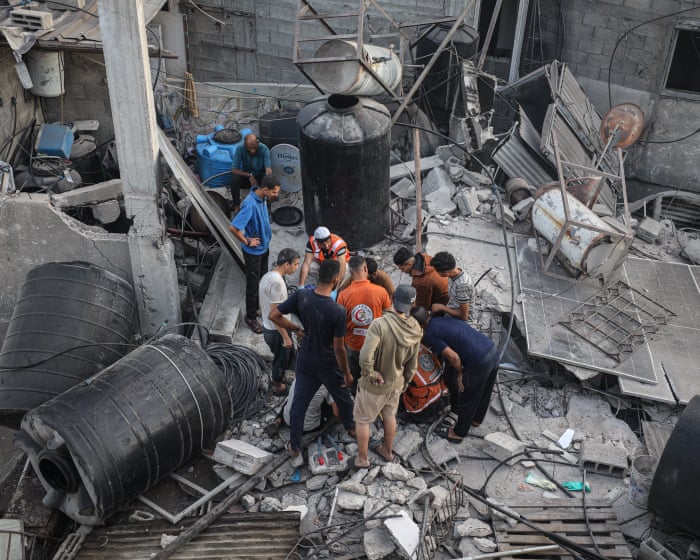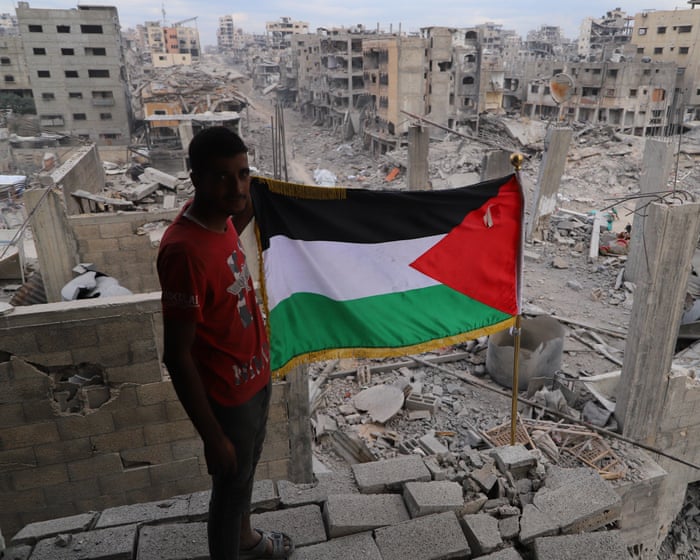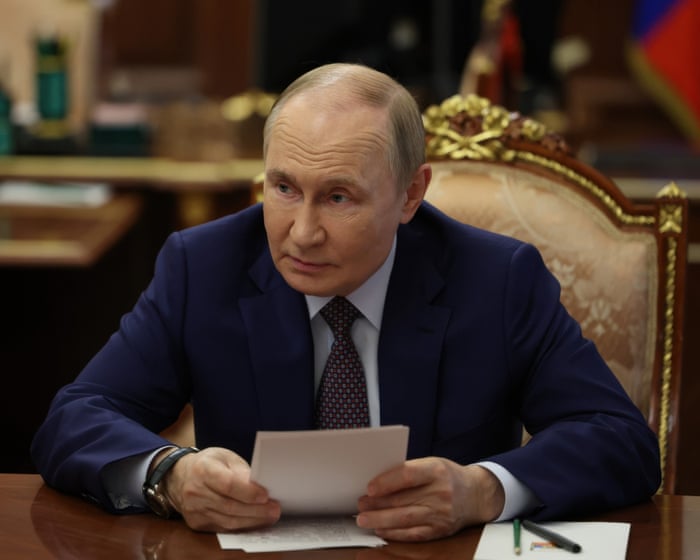Overnight Israeli airstrikes on Gaza killed at least 104 Palestinians, including children, marking the deadliest day since a US-brokered ceasefire began and posing the most serious threat to the already fragile truce.
According to Gaza’s civil defence agency, the strikes—among the bloodiest in the two-year conflict—killed at least 35 children and wounded 200 people. The attacks came hours after Donald Trump stated that nothing would endanger the ceasefire agreement he helped mediate.
Dr. Mohammed al-Mughir, director of humanitarian support and international cooperation at Gaza’s civil defence, told the Guardian that one of the strikes targeted a camp for cancer patients known as the Insan camp.
The death toll was confirmed by an AFP count based on reports from medical staff at five Gaza hospitals that received the casualties.
Israeli Prime Minister Benjamin Netanyahu ordered the strikes on Tuesday evening following a clash between Palestinian militants and Israeli troops. The decision also came amid rising anger over Hamas handing over body parts of a hostage whose remains Israeli forces had recovered two years earlier.
Netanyahu convened an emergency meeting to address what he called Hamas violations of the ceasefire, while far-right members of his government demanded a return to war.
In response, Hamas postponed the planned handover of another hostage’s remains, which was scheduled for Tuesday night, while denying responsibility for the earlier gun attack.
Speaking to reporters on Air Force One on Wednesday, Trump reiterated that nothing should jeopardize the ceasefire but insisted Israel “should hit back” if its soldiers are killed. He stated, “They killed an Israeli soldier. So the Israelis hit back. And they should hit back.”
US Vice President JD Vance had earlier remarked that the ceasefire was holding despite “skirmishes.”
However, Tuesday night’s violence highlighted the weaknesses of a truce that has been repeatedly violated since it began. Before the latest strikes, Gaza’s media office accused Israel of 80 ceasefire violations, resulting in 97 Palestinian deaths and 230 injuries.
Mahmoud Bassal, a spokesperson for Gaza’s civil defence, described the situation as “catastrophic and terrifying,” calling the strikes a “clear and flagrant violation of the ceasefire agreement.” He told AFP that Israeli attacks hit tents for displaced people, homes, and areas near a hospital in Gaza.
When asked if the strikes signaled a full-scale invasion resumption, an IDF spokesperson said on Tuesday that the military could not yet elaborate on the scale. By Wednesday, the IDF announced it had reinstated the Gaza ceasefire.
The Israeli military released footage allegedly showing Hamas members reburying a body to stage a false discovery for the International Committee of the Red Cross, accusing Hamas of trying to create a false impression of efforts to locate bodies. Hamas has not commented on these allegations.
The developments have angered many Israelis, with far-right ministers Itamar Ben-Gvir and Bezalel Smotrich criticizing Hamas and urging Netanyahu to resume the war.
Under the ceasefire that took effect on October 10, Hamas is required to return the remains of all Israeli hostages as soon as possible. In return, Israel has agreed to hand over 15 Palestinian bodies for each Israeli one.
So far, Hamas has returned the remains of 15 hostages, with 13 bodies still in Gaza. The group claims it does not know the exact locations of all the bodies, having lost contact with several units holding captives who were reportedly killed in Israeli bombardments.
Although Trump acknowledged that some bodies are difficult to retrieve, he suggested that others could be returned now but are not, possibly due to issues related to Hamas’s disarmament.
Israel has made disarming Hamas a central goal, considering it a key condition for progress.The two-year war came to an end on Sunday when Khalil al-Hayya, Hamas’s chief negotiator, stated that the group’s weapons are linked to the presence of occupation and aggression. He clarified that if the occupation ceases, these weapons would be transferred to the state. It was not clear whether he was referring to the yet-to-be-formed Palestinian governing body, which is anticipated to assume control of Gaza’s administration after Hamas steps down.
Frequently Asked Questions
Of course Here is a list of FAQs about the recent escalation in Gaza designed with clear direct questions and answers
Basic Factual Questions
1 What is happening between Israel and Gaza right now
Recent Israeli military attacks in Gaza have resulted in a significant number of casualties with at least 104 people reported killed overnight This surge in violence is threatening a previously established ceasefire making it very unstable
2 Why is Israel attacking Gaza
The Israeli military states these operations are targeted strikes against militant groups like Hamas in response to rocket fire or other threats originating from Gaza The specific trigger for this latest round is often a preceding event such as a rocket attack or a political flashpoint
3 What is a ceasefire and why is it unstable
A ceasefire is a temporary halt in fighting agreed upon by opposing sides Its considered unstable when one or both sides violate the terms leading to a rapid return to violence which is what appears to be happening now
4 Who are the main groups involved in the fighting
The primary groups are the Israeli military and Palestinian militant groups operating in Gaza with Hamas being the most prominent
5 Where is Gaza and who lives there
Gaza or the Gaza Strip is a small densely populated piece of land on the Mediterranean coast bordering Israel and Egypt It is home to over two million Palestinians
Deeper Contextual Questions
6 Whats the historical background to this conflict
The conflict is deeply rooted in a decadeslong dispute over land and national identity between Israelis and Palestinians Key issues include borders security the status of Jerusalem and the rights of refugees
7 What is Hamas and what are its goals
Hamas is a Palestinian Islamist political and military organization that governs the Gaza Strip It is designated as a terrorist group by Israel the US and others Its founding charter calls for the establishment of a Palestinian state in the area that is now Israel
8 How does the blockade of Gaza play a role in this
For over 15 years Israel and Egypt have maintained a strict land air and sea blockade on Gaza citing security concerns about Hamas This blockade severely restricts the movement of people and goods contributing to a humanitarian crisis and high unemployment




